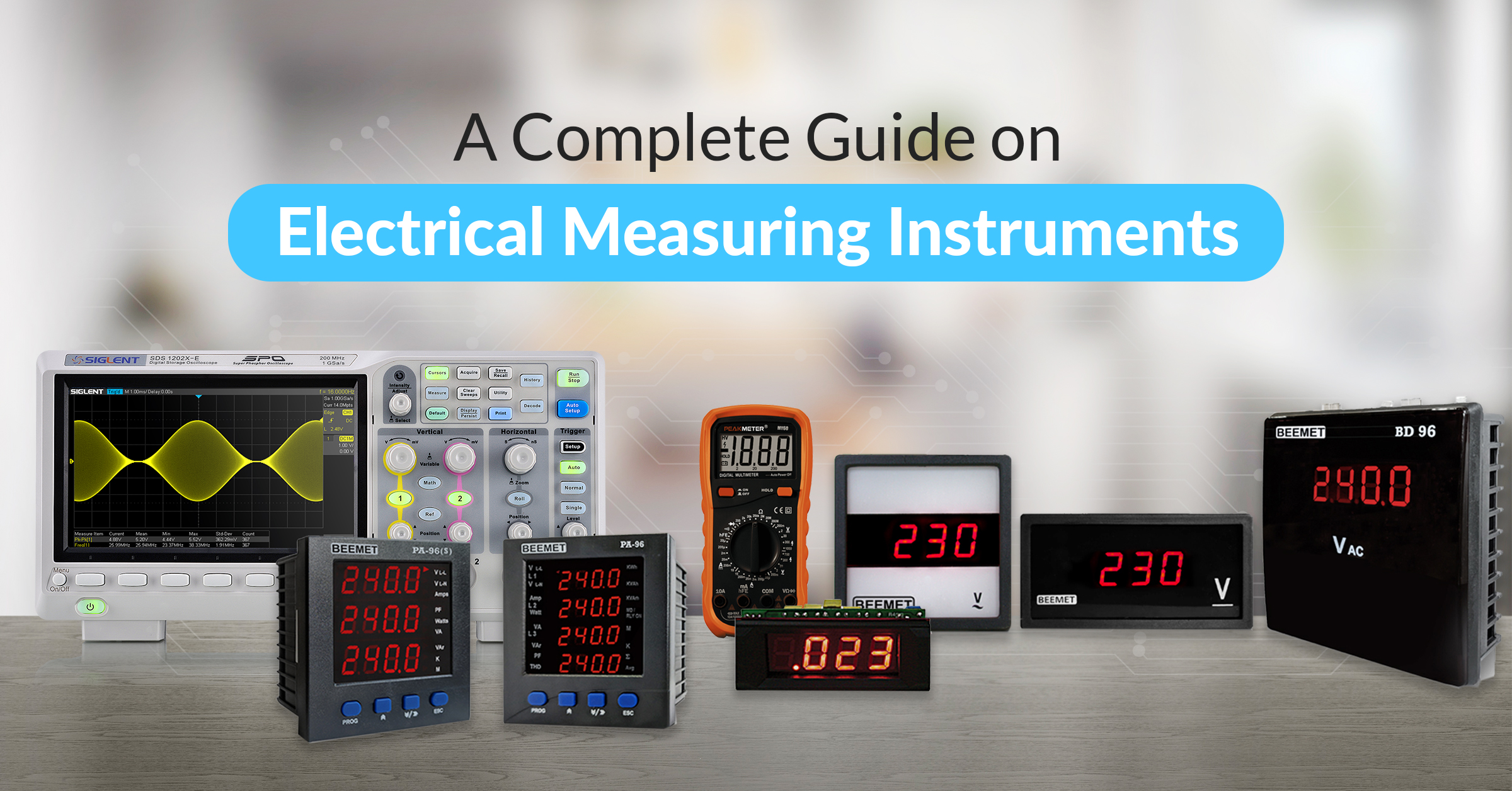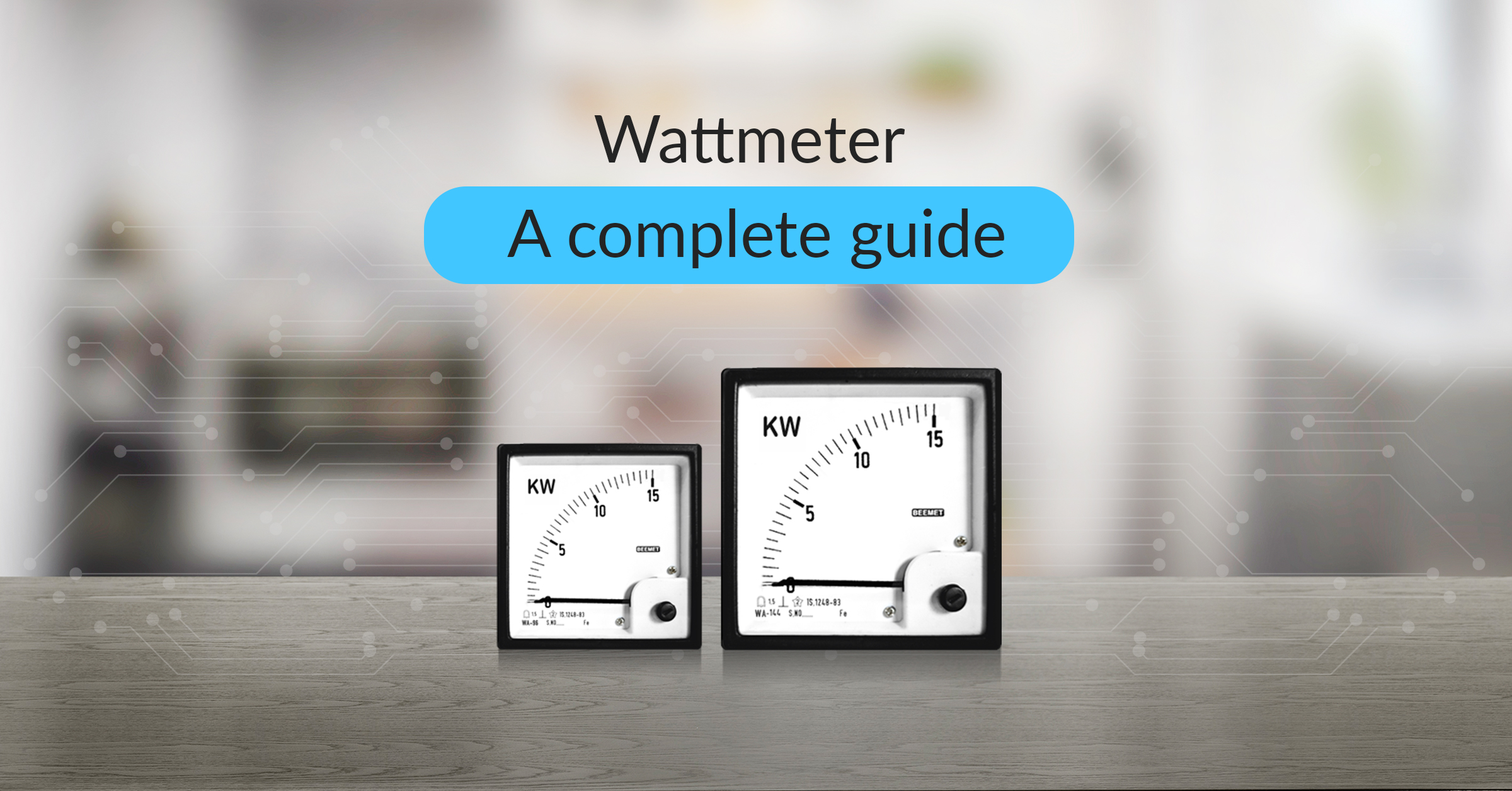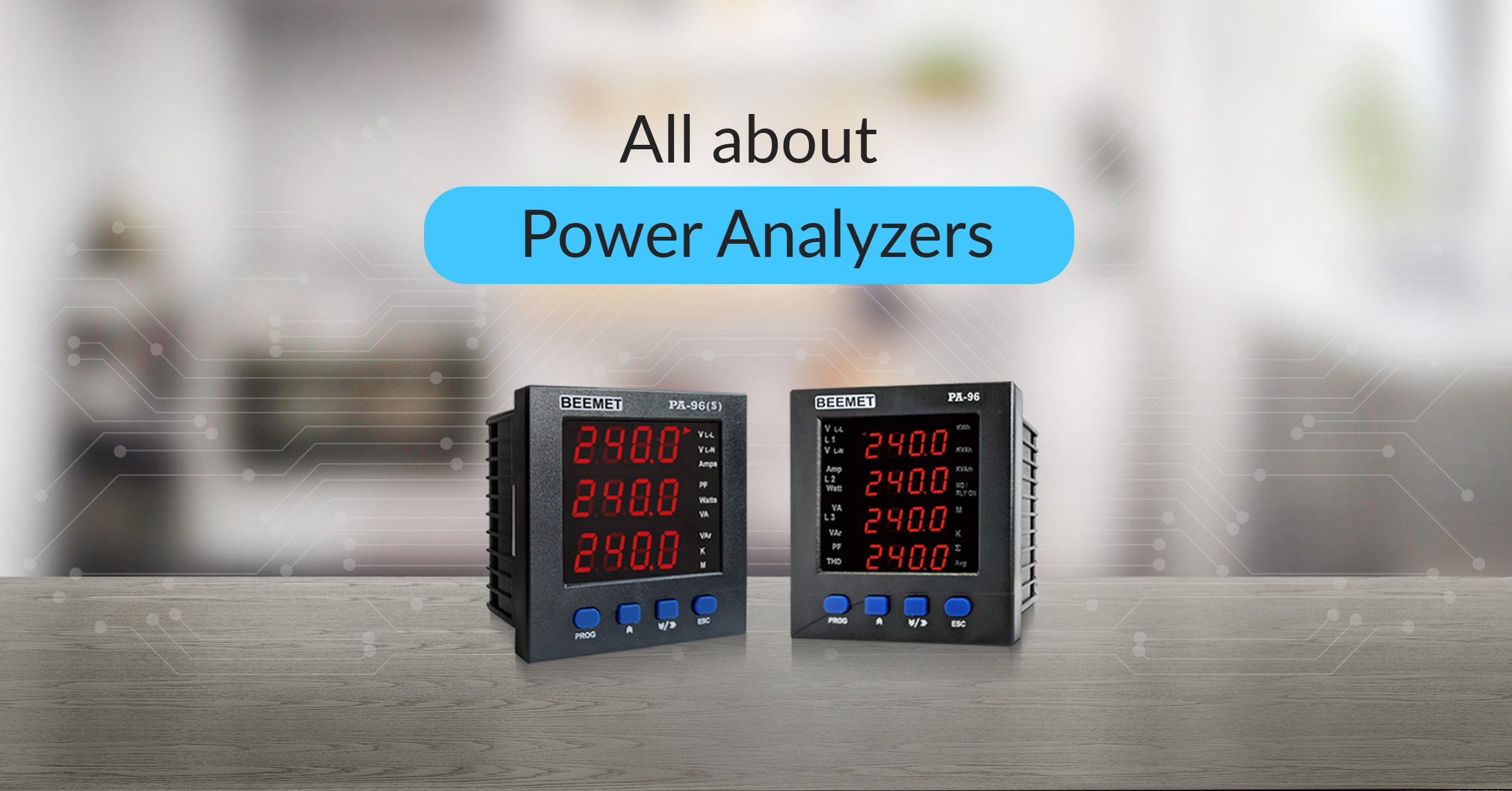Electrical measuring instruments are essential tools for monitoring, measuring, and analyzing electrical circuits and systems. These electrical instruments play a crucial role in maintaining the safety, accuracy, and efficiency of electrical systems in various industries like construction, manufacturing, and electrical engineering.
This blog will help you understand the different electrical instruments such as:
1. Multimeter
2. Ammeter
3. Voltmeter
4. Wattmeter
5. Ohmmeter
6. Oscilloscope
Let’s diver deeper into their applications and how to use these measuring instruments correctly to get accurate readings.
Multimeter
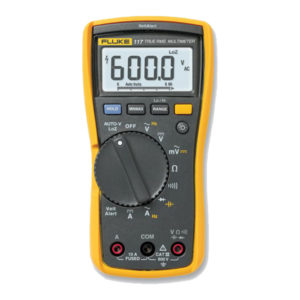
Multimeters are the most commonly used electrical measuring tools in laboratories. They can measure multiple electrical quantities like voltage, current, and resistance. Multimeters are often used for troubleshooting and maintenance of electrical systems.
Ammeter
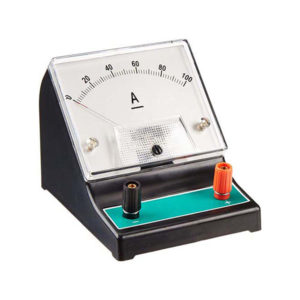
An ammeter measures the direct or alternating current in the electric circuit. The current is measured in Ampere (A). Ammeters are connected in series in the circuit. Ammeter has a very low resistance so as to allow a large amount of current to flow through the circuit. Ammeter can measure a broad range of current values.
When the current to be measured is in milliamperes or microamperes, the current is measured in microammeter or milliamperes. There are 2 main types of ammeters – analog and digital. Analog ammeters use a pointer and dial to display the current, while digital ammeters use a digital display.
Voltmeter
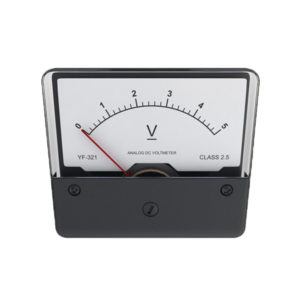
Voltmeter measures the voltage or electrical potential difference, between two points in an electrical circuit. Voltage is measured in volts. Voltmeters are typically connected in parallel with the component or circuit being measured, and they have a very high resistance to minimize the amount of current that flows through the circuit.
Commercial voltmeters follow an electromechanical mechanism in which current is first translated into voltage before being measured. In electrostatic voltmeters, the voltage is directly measured. Like ammeters, voltmeters are also of 2 types – analog and digital.
Wattmeter
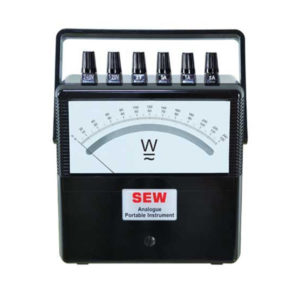
Wattmeter measures the power or rate at which energy is being used, in an electrical circuit. Power is measured in units of watts (W). Wattmeters are typically connected in a three-phase system and measure the apparent power, as well as the real power, in a circuit. They are also used in inspecting the power supply and determining the current costs.
Wattmeters are connected in the circuit in a way that allows them to measure both the current and voltage in the circuit, and then calculate the power using the formula P = VI (where P is power, V is voltage, and I is current). Wattmeters are used to measure the power consumption of appliances, as well as the power output of generators and other power sources.
Ohmmeter

An ohmmeter is an instrument used to measure resistance. It is connected in series with the circuit being tested, and it measures the resistance to the flow of electric charge through the circuit. Ohmmeter readings are usually given in ohms (Ω). Ohmmeters can be used to test continuity, check for breaks in a circuit, or measure the resistance of a component.
Oscilloscope
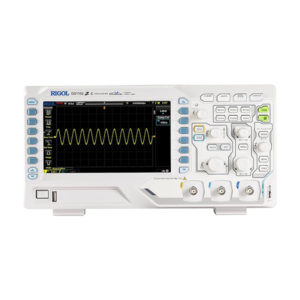
An oscilloscope is another laboratory instrument used to analyze the waveform of electronic signals. The device draws a graph of the instantaneous signal voltage as a function of time. Oscillator can display AC or DC current waveform having a frequency as low as 1 Hertz or as high as several megahertz. High-end oscilloscopes can display signals having a frequency up to several gigahertz.
How to Select the Right Electrical Instrument?
It’s also important to consider the range of measurements that the instrument can make. Some instruments have a wide range of measurements, while others have a more limited range. Additionally, it’s important to consider the accuracy of the instrument. The more accurate the instrument, the more precise the measurement will be.
It is important to note that in order to obtain accurate measurements, the correct range or sensitivity of the meter must be selected. For example, if a meter with a low range is used to measure a high current, the meter will not be able to give an accurate reading. Similarly, if a meter with a high range is used to measure a low voltage, the meter will not be able to give an accurate reading.
When using these instruments, it is important to follow proper safety precautions to protect yourself and the equipment. This includes ensuring that the circuit being measured is de-energized before making any connections, and wearing appropriate personal protective equipment such as rubber gloves and safety glasses.
Conclusion
In conclusion, electrical measuring tools play an important role in ensuring the safe and efficient operation of electrical systems. By understanding the unique capabilities and features of these instruments, you can make an informed decision when choosing the right one for your application. From voltmeters, ammeters, wattmeters, oscilloscope, multimeters, and clamp meters, there is a wide variety of electrical measuring instruments available to meet your specific needs.
If you want to know the electrical units of measurement for the above instruments, check out our blog
FAQs
When choosing an electrical instrument, you should consider the range of values that you will be measuring, the accuracy required, and the type of circuit you will be measuring (DC or AC).
A digital meter uses a digital display to show the electrical measurement, while an analog meter uses a pointer on a scale to display the measurement.
Yes, when using an electrical measuring instrument, it is important to take precautions to avoid electric shock and to properly handle the device to avoid damage. Always refer to the user manual of the specific device for safety precautions.

